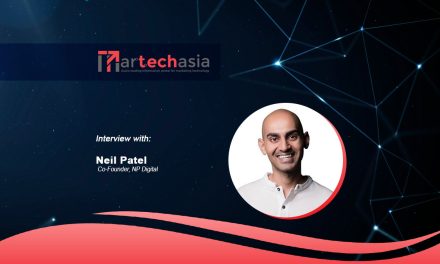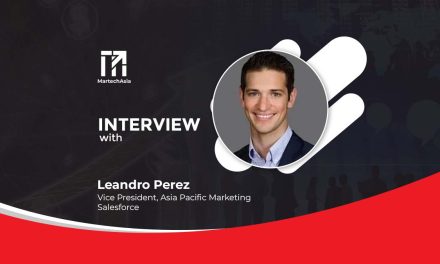We’ve all heard about the stigma of ‘agency culture’. Post-pandemic, what have marketing, creative, advertising and PR agencies learnt? We find out from an agency CEO…
In 2013, an Indonesian advertising exec passed away from overworking. Fast forward 10 years later, a Thai man working for TNN, a local Thai TV channel died at his desk from a heart attack possibly caused by overworking.
Working in an agency in Southeast Asia often means being immersed in a work culture where long hours are the norm, with zero-to-none work-life balance, fear of failure and high expectations leading to pressure to perform.
With all the awareness and changes brought upon us in this past decade, including the pandemic driving remote hybrid-work trends, how much has agency culture changed? DigiconAsia finds out more from Teng Chan Leong, CEO, Skribble.
How are advertising and marketing agencies adapting to the post-pandemic hybrid-work environment?
Teng: The post-pandemic norm allows agencies and clients to redefine the nature of engagement which in turn gave rise to new dynamics from two perspectives:
1. As clients adopt a hybrid approach, physical meetings are less common, and online calls are preferred.
2. The workforce is increasingly demanding a hybrid workspace, meaning agencies need to provide a hybrid approach to attract talent.

As a result, agencies are also learning to collaborate digitally, work remotely, increase adoption of cloud and co-creation solutions, and hire remote talents. In this new norm, Skribble no longer sees hybridism as a compromise, but an opportunity. We’ve shifted the narrative from merely working with the hybrid system, to thriving in a hybrid culture.
With digital transformation unavoidable in today’s digital economy, how are agencies leveraging technology to improve efficiency and creativity?
Teng: The most prominent areas of technology adoption are in:
- Collaboration. As the digital natives join the workforce, technology competency is no longer a barrier. This makes agency workflows extremely collaborative with the right tools. We see a higher adoption of digital knowledge, workflow, and management tools like cloud storage, Notion, Monday, Asana, and many others to facilitate these collaborations.
- Automation. With these tools becoming more mature as well, more automations are being built to improve speed and reliability of services. In Skribble, data automation is one of the automation initiatives we have embarked on to reduce manual data crunching.
- Quality. With the emergence of AI, the quality of work has also improved. What used to take days to produce, can now be done in minutes. This means that first drafts, proposals, ideations, and “rough sketches” are now a lot more refined. The same goes for copywriting assistance such as spell check. These smart tools, when used correctly, not only prevent mistakes and improve quality, but also allow creative individuals to do more.
What are some key initiatives to promote diversity and inclusion within an agency, which can lead to a more inclusive and supportive culture?
Teng: Skribble practices and promotes a progressive and accepting culture. As one of our key focus areas within our ESG framework, people and inclusivity are among the ways an agency, as an entity, can promote sustainable people policies.
For example, ensuring that we have a balanced and representative racial and gender diversity, and hiring policies that are blind to religious and sexual preferences. Beyond just at the policy level, we also make sure that the education among the colleagues reflect the same tolerance and acceptance and the environment supports a progressive workplace.
This not only allows people from different backgrounds to be comfortable with each other, but directly creates a supportive environment. In the end, we recognise that the people-filled agency is in a way a microcosm of the larger society, so we believe that each workplace should try to build and promote an ecosystem that is reflective of an ideal community and nation.
What are some key considerations and policies to promote work-life balance, mental health support, and professional development opportunities?
We practice a people-first policy and work-life integration. Because the industry has been notorious for long working hours and toxic work environments, we have to compensate and recalibrate to set a new standard. One of the practices that we have is matching opportunities to interest. By integrating personal and career preference into work opportunities, we are able to maximise joy and fulfillment.
For example, Roger, our Head of Digital, is an avid skydiver. Every time we have an engagement in Thailand, he’d be our first pick, not only because he is familiar with the environment, but he gets to extend his trip and sky dive there. Philip, our designer, needs to chauffeur his kids to and from school. By allowing for a more flexible work schedule, he is able to fulfill his duties as a parent while delivering some of the best work as one of the most reliable teammates.
All these little thoughtful practices and accommodations create a grateful team. We truly believe that only by having a proper work life integration can the agency perform to their best potential.
How does leadership shape agency culture, especially in promoting transparency, communication and mentorship?
Leadership in the service industry, especially within the agency landscape, is all about people management. From clients, to other leaders, to the team, leaders in an agency are often the ones who dictate the culture. It happens in three specific areas:
1. Setting the tone. Leaders first set the tone in terms of expectations and standards. Often, leaders decide what is acceptable and what is not. What is considered remarkable, and what isn’t. For example, winning a pitch at the expense of the team having to work late nights against their will. If the leader allows and accepts this, it sets the tone for what the team can expect in the future. If the leader walks away from a toxic engagement in support of the team’s POV, it sets a whole other tone.
2. Leaders choose leaders. A single leader is often limited. The next line of management or leadership may be an extension of the leader or deviation. Because of the empowerment, who is put in a position of leadership and power will dictate how the culture permeates. Either from top down, or stopped at a certain level. So the first mentorship actually starts with the leaders themselves.
3. Leaders set an example. In an increasingly distrusting world, leaders often have to take the first step to trust and be transparent before expecting it from their team. Gone are the days where leaders were dictators. Today, leaders are expected to walk the talk and be hands-on as well.


















